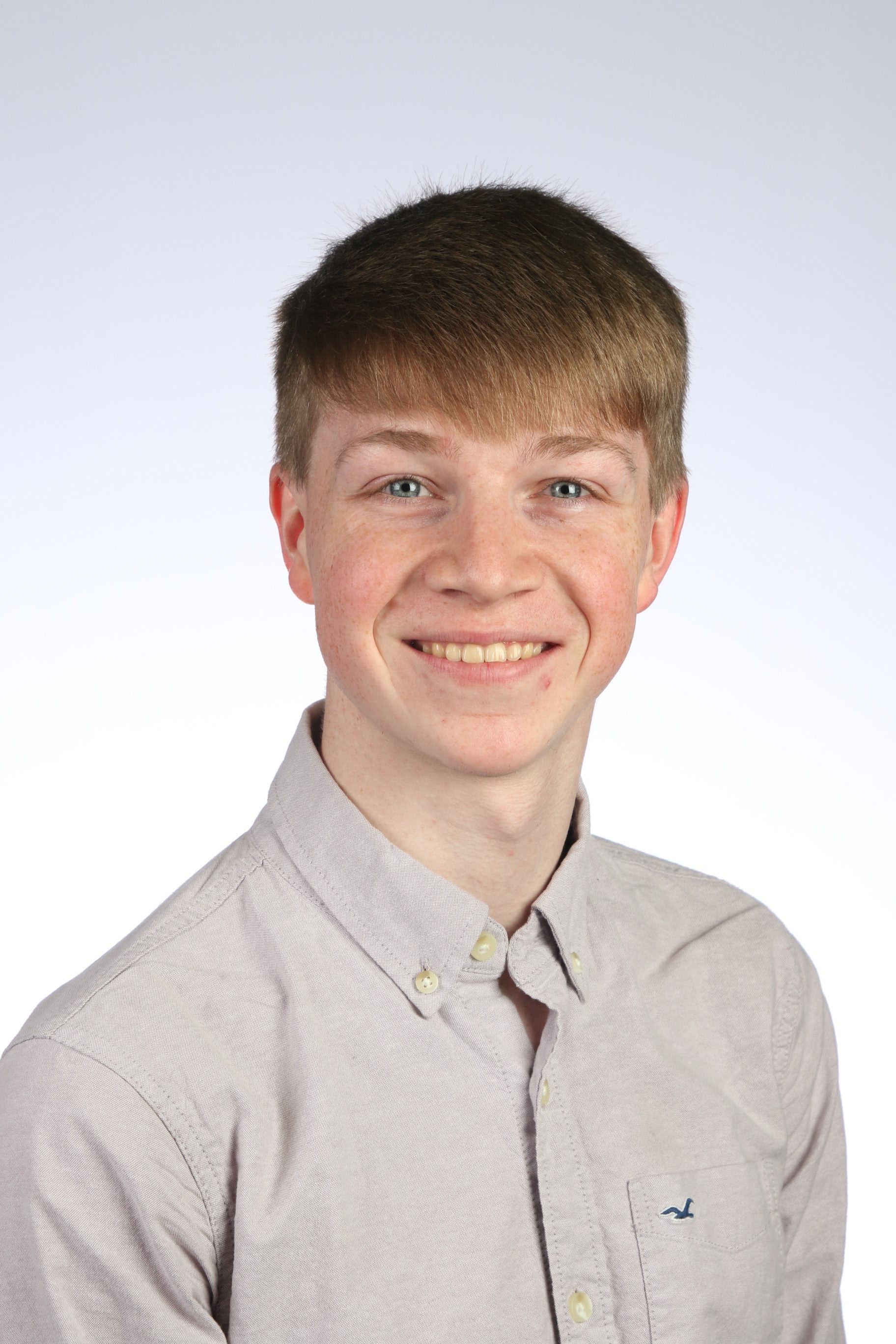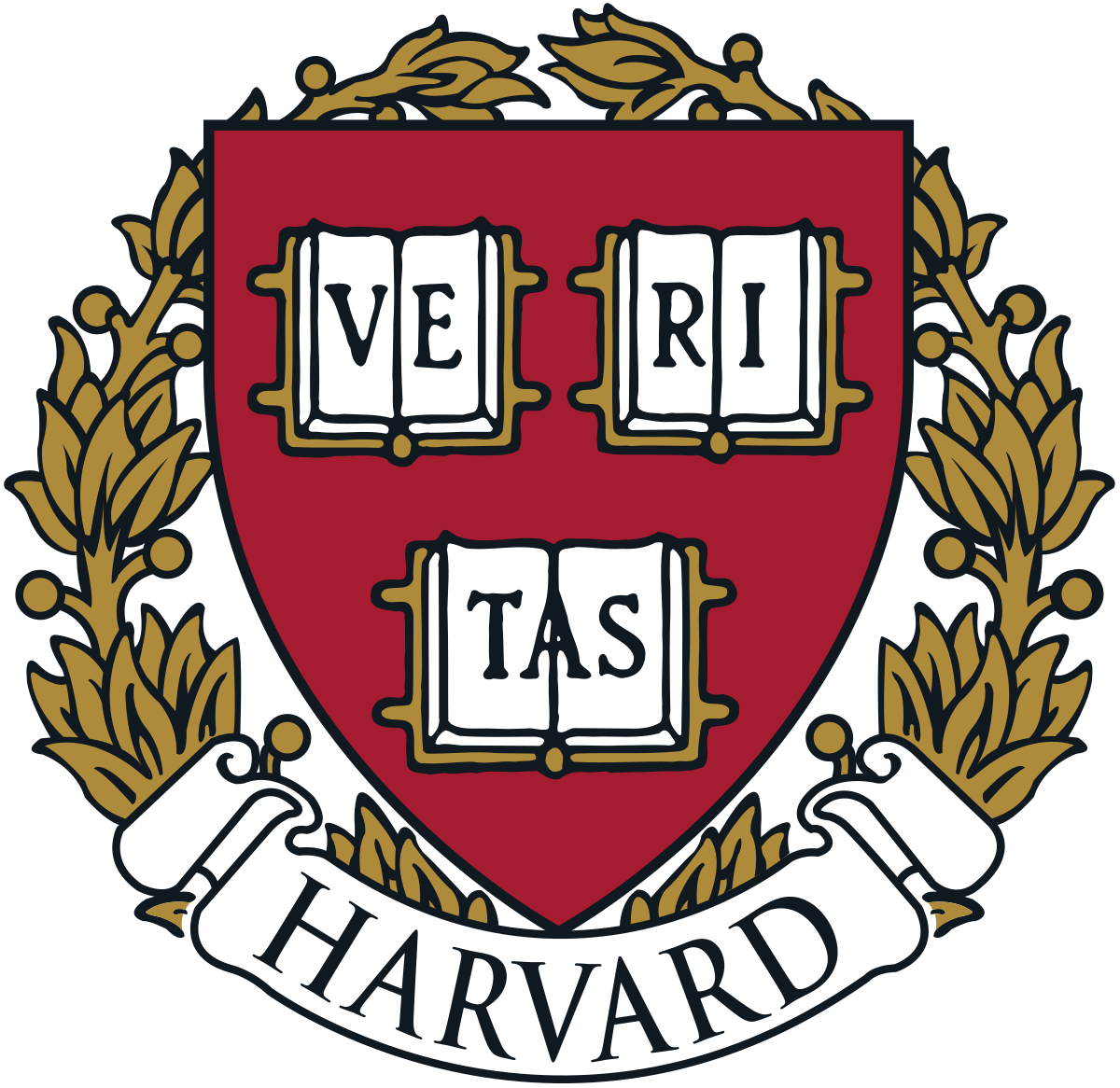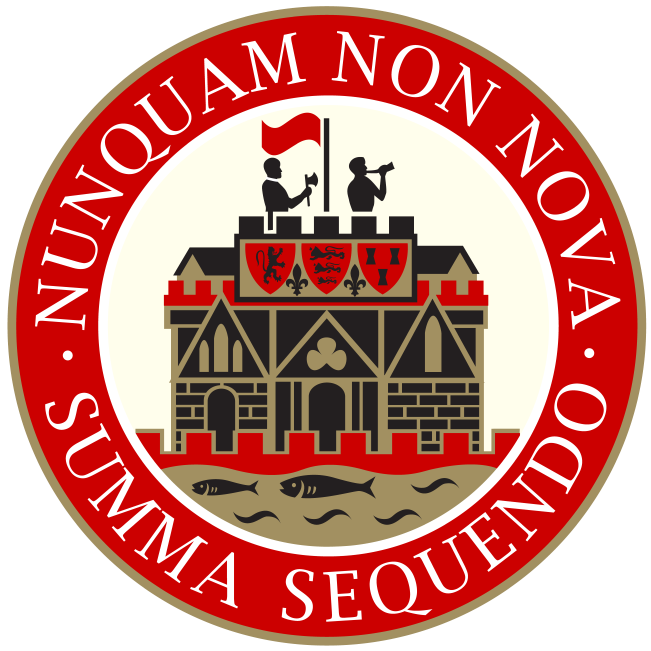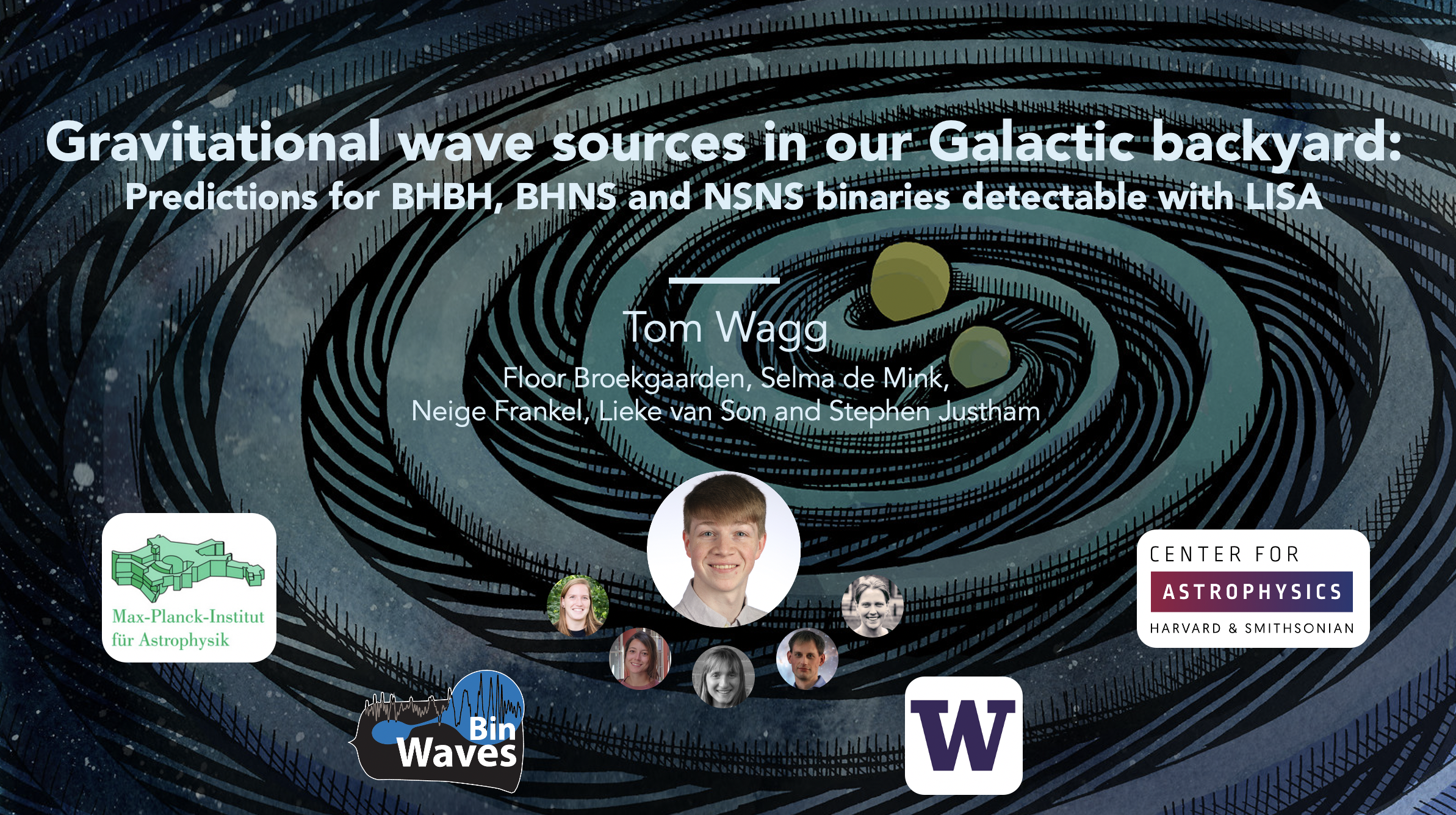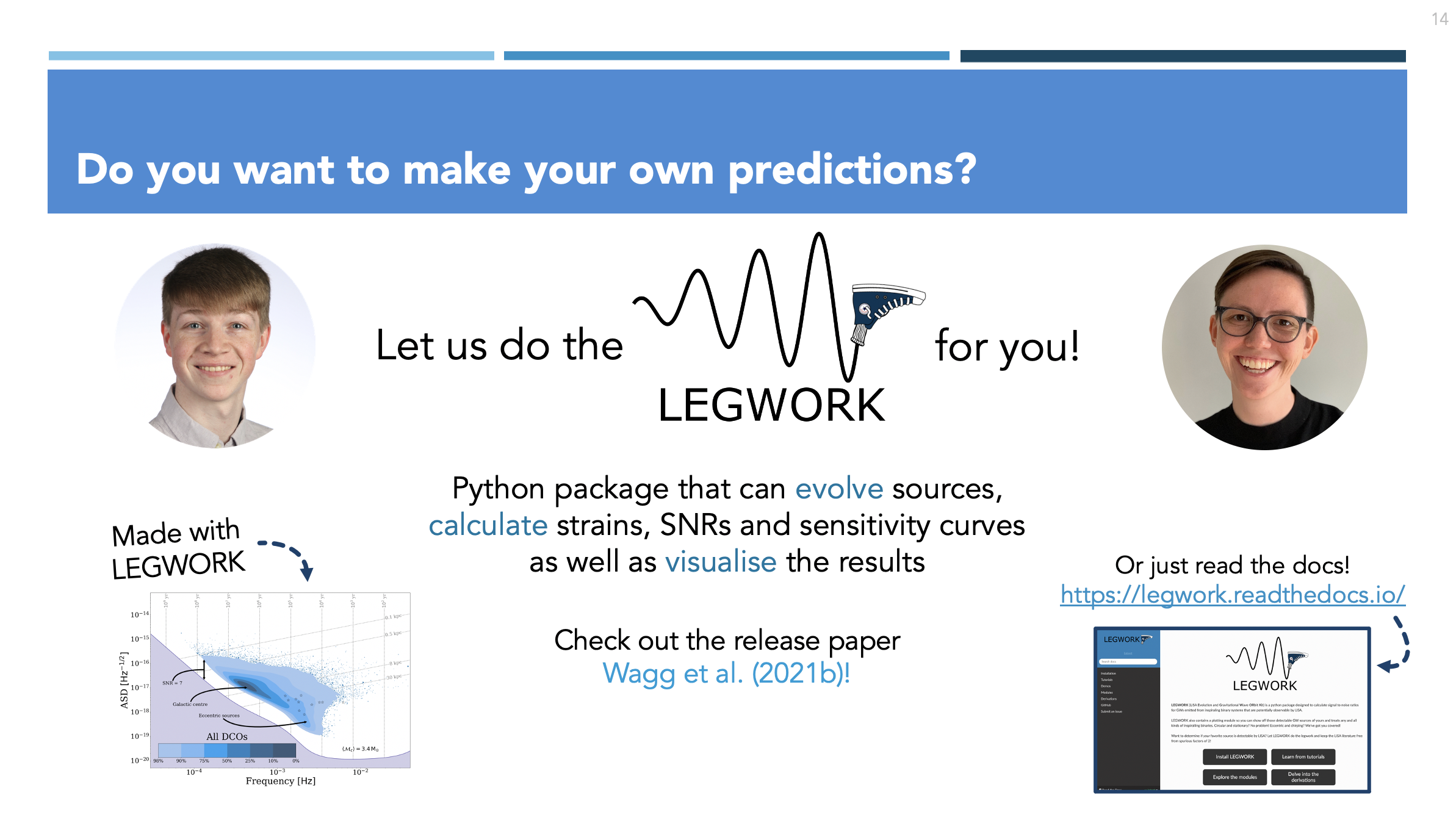About
Linking binary evolution and galactic dynamics
I am broadly interested in constraining binary stellar evolution, in particular most recently by using the kinematics of stars and compact objects. With this goal in mind, my PhD thesis focuses on developing, and applying, self-consistent population synthesis and galactic dynamics simulations with a new framework I created called cogsworth.
I've applied this framework to a variety of problems so far, from runaway stars to supernova feedback, in order to better understand binary stellar evolution and the impact it can have on its environment.
From asteroseismology to gravitational waves
Given the complexity of the problem, it's important to constrain binary evolution using many different techniques. In a recent paper, I used detailed stellar evolution models to show, for the first time, that mass transfer leaves an imprint on the asteroseismic signals of a star for the rest of its main sequence.
Previously I simulated populations of double compact objects in the Milky Way and used LEGWORK, a Python package that I developed, to estimate the subpopulations that would be detectable by the upcoming LISA gravitational wave detector. I showed how these populations varied with different binary physics for comparison with the actual observed populations.
Open-source software development
I'm passionate about developing and applying open-source software in my work. I'm the lead developer for two codes I mentioned above: cogsworth and LEGWORK. I contribute to a number of other projects, including COMPAS, COSMIC, and gala.
I'm also the co-creator of the Software Citation Station, a tool to help researchers generate citations for the software they use in their work.
Beyond the science
I'm originally from the luscious English countryside near Newcastle-under-Lyme and, thanks in no small part to a passionate science teacher mum, I grew up wanting to understand everything around me, which quickly led me to Physics. I play on two field hockey teams in Seattle and enjoy hiking and camping in the beautiful Pacific Northwest. In typical astronomer fashion I'm also rather partial to some bouldering!
More about me
